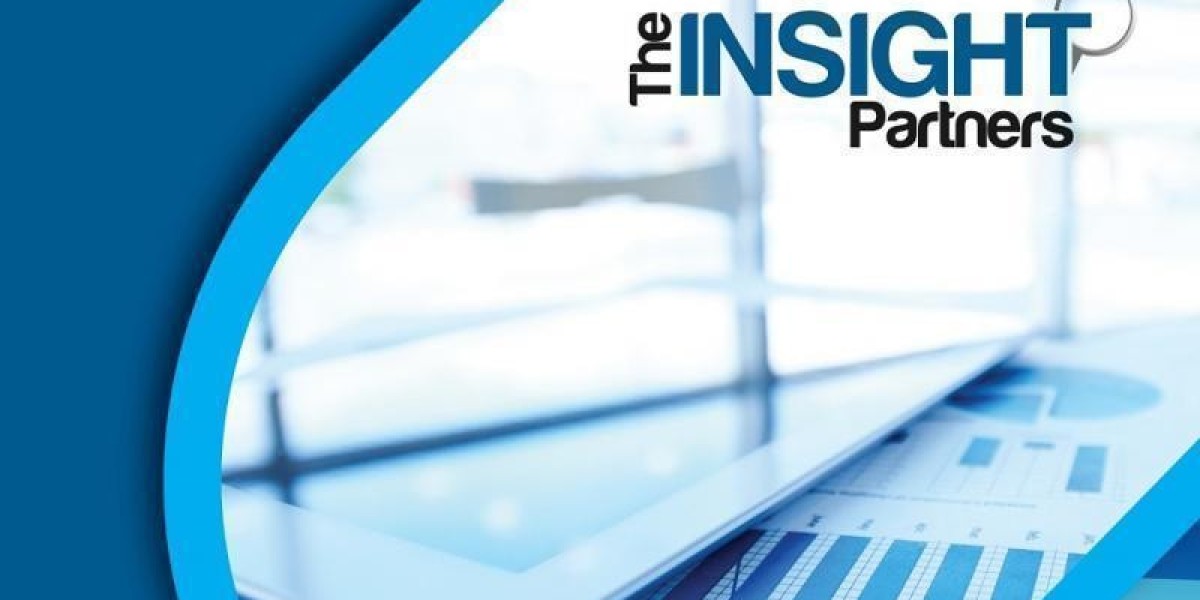In the evolving landscape of oncology, neoantigen‑based approaches are emerging as one of the most promising frontiers. Neoantigens are novel antigens generated by tumor-specific mutations that are not recognized as “self” by the patient’s immune system. This characteristic allows therapies built around neoantigens to mount precise immune attacks on cancer cells while sparing healthy tissue. The Insight Partners projects that the global neoantigens market will grow from US$ 271.43 million in 2023 to US$ 1,054.78 million by 2028, at a compound annual growth rate (CAGR) of 31.2 %.
Such explosive growth is driven by synchronous advances in genomics, bioinformatics, immunotherapy, and the push toward personalized (or precision) medicine. Below, we explore the growth strategies that neoantigen firms are deploying, the major players shaping the field, and the key market segments to watch.
Growth Strategies in the Neoantigens Market
Companies in this space are using multiple, overlapping strategies to scale and differentiate. Some of the most visible and effective ones include:
1. Integration of AI / Machine Learning for Neoantigen Prediction
A major bottleneck in neoantigen therapy has always been correct identification of which mutated peptides will elicit a robust immune response (i.e. immunogenic neoepitopes). To boost accuracy and throughput, companies are increasingly deploying AI and machine learning models to prioritize candidates. The Insight Partners notes that the integration of AI with neoantigen vaccine development is a key trend fueling market growth.
By coupling next-generation sequencing (NGS) data with predictive models that assess peptide–MHC binding, antigen processing, and T‑cell recognition, firms can reduce false positives and streamline clinical pipelines. In some cases, external technology partners or IT firms are entering alliances to build neoantigen prediction systems (for instance, a collaboration between NEC and Transgene to predict immunogenic cancer mutations in TG4050).
2. Partnerships, Collaborations and Licensing
Given the interdisciplinary nature of neoantigen therapeutics (spanning immunology, genomics, bioinformatics, and manufacturing), strategic partnerships are essential. Many neoantigen developers are collaborating with academic institutions, contract research organizations (CROs), biotech firms, and large pharmaceutical companies to share data, co‑develop technologies, and co‑commercialize products.
For instance, companies often license cutting-edge computational platforms, or enter into co-development agreements to validate neoantigen pipelines against established immunotherapy drugs (e.g. checkpoint inhibitors). The Insight Partners report emphasizes that inorganic strategies (mergers, acquisitions, alliances) are commonly adopted to accelerate development and broaden technology reach.
3. Combination Therapy Approaches
Rather than deploying neoantigen vaccines alone (monotherapy), many firms are combining them with other immunotherapy modalities—especially checkpoint inhibitors (such as anti-PD-1/PD-L1)—to enhance efficacy. The rationale: neoantigens prime T‑cells, while checkpoint inhibitors prevent those T cells from being suppressed by tumor microenvironments.
In 2023, The Insight Partners notes that the combination therapy segment already had the larger share of the market. However, mono-therapy is expected to grow faster (CAGR ~33 %) over the forecast period.
4. Portfolio Diversification Across Indications
While many neoantigen efforts began in melanoma (historically one of the most immunogenic cancers), forward-looking firms are expanding into multiple tumor types: gastrointestinal cancers, lung cancer, head & neck cancers, urinary cancers, and more. This diversification helps mitigate risk by avoiding overreliance on a single indication.
5. Vertical Integration & Clinical Capability Building
Some firms are investing in their own infrastructure—sequencing, antigen synthesis, immunomonitoring labs, bioinformatics pipelines—in order to reduce reliance on third parties and compress development timelines. As neoantigen therapies are inherently personalized, building efficient end-to-end capabilities can confer a competitive edge (faster turnaround, tighter quality control, lower cost).
6. Aggressive Clinical Pipeline Advancement & First‑Mover Differentiation
In this fast-moving space, being among the first to reach proof-of-concept in harder tumor types or broader patient populations can create strong differentiation. For example, Moderna has been pushing its personalized cancer vaccine (mRNA‑4157) in combination with Merck’s Keytruda, with early tolerability and response data.
Key Market Segments
The neoantigens market can be parsed along several dimensions. Below are the most salient segmentations.
By Treatment Modality
- Combination Therapy: Neoantigen therapies used alongside other immunotherapy agents (e.g., checkpoint inhibitors). This segment currently holds the larger market share given its enhanced efficacy potential.
- Mono Therapy: Neoantigens delivered alone, without adjunct immunomodulators. Although the share is smaller now, it's projected to grow faster.
By Therapeutic Specialty / Cancer Indication
The Insight Partners classifies the market into several tumor categories:
- Gastrointestinal Cancer
- Lung Cancer
- Solid Tumors (broad class)
- Urinary System Cancers
- Melanoma
- Head & Neck Cancer
- Others
In 2023, gastrointestinal cancer held the largest share and is expected to maintain a strong growth trajectory.
By Geography / Region
The market is also segmented by region:
- North America
- Europe
- Asia-Pacific
- Middle East & Africa
- South & Central America
North America currently dominates, due to established biotech ecosystems, high R&D spending, and favorable regulatory environments.
However, Asia-Pacific is anticipated to become a high-growth region, as nations like China, India, Japan, and South Korea increase investment in immuno‑oncology, regulatory modernization, and personalized medicine.
Prominent Players Shaping the Neoantigens Market
Below is a snapshot of key companies mentioned by The Insight Partners and other sources, along with their strategic positioning and contributions:
- Achilles Therapeutics plc
- Advaxis, Inc.
- Frame Cancer Therapeutics
- Genocea Biosciences
- Gradalis, Inc.
- Gritstone Oncology
- Immunicum AB
- Medigene AG
- Ziopharm Oncology, Inc.
A few company-specific highlights:
- Genocea Biosciences operates an ex vivo platform, ATLAS, for neoantigen discovery; its GEN-009 candidate is in Phase 1a/2 trials targeting melanoma, lung cancer, and carcinomas.
- Gritstone Oncology uses an in silico AI platform, EDGE, for neoantigen design. Their product pipeline includes GRANITE-001 (personalized) and SLATE-001 (shared/common neoantigen vaccine).
- Moderna is leveraging its mRNA platform, particularly via mRNA-4157 in combination with Merck’s Keytruda, and has shown tolerability and responses across dose levels in early trials.
- BioNTech (though not always listed in the Insight Partners press release) is another strong contender, with its IVAC Mutanome platform for individualized neoantigen mRNA vaccines.
- Agenus, Inc. has developed “AutoSynVax (ASV)” – a neoantigen vaccine with adjuvant QS-21. ASV is in Phase 1 trials for solid tumors.
Many of these players are distinguished not just by the strength of their clinical pipelines, but by their investment in computational platforms, partnerships, and scale-up capabilities. The competitive landscape is still dynamic and evolving, and some firms may consolidate or be acquired as the field matures.
Challenges & Risks to Consider
While the growth outlook is promising, certain hurdles may slow or complicate commercialization:
- Safety / Side Effects: As with any immunotherapy, there is risk of autoimmune reactions, on-target off-tumor toxicity, or exuberant immune response. The Insight Partners cites possible side effects of neoantigen vaccines as one potential market restraint.
- Regulatory Complexity: Neoantigen therapies being personalized and adaptive in nature can strain traditional regulatory pathways. Harmonizing standards across jurisdictions may be challenging.
- High Costs and Manufacturing Complexity: Personalized therapies require bespoke manufacturing (sequencing, peptide or mRNA synthesis, formulation), which complicates scaling and increases costs.
- Validation & Clinical Success Risk: Not all predicted neoantigens successfully drive T-cell responses in patients. Translational gaps remain.
- Reimbursement & Market Acceptance: Payors and health systems may resist high-priced personalized immunotherapies without strong efficacy and real-world evidence.
- Competition from Adjacent Modalities: Alternative immunotherapy strategies (CAR-T, bispecifics, adoptive cell therapy, TCR therapies) may compete for investment or clinical priority.
Forward Outlook & Strategic Takeaways
Given the rapid innovation, here are some trends and strategic considerations likely to shape the neoantigens market through 2028 and beyond:
- AI/ML Will Be Table Stakes
Predictive modeling and computational pipelines will increasingly separate winners from laggards. Good biology without strong informatics may no longer suffice. - Platform Scalability & Modularization
Firms that modularize their platforms—making parts of their discovery, synthesis, or monitoring workflows standardizable—will gain efficiency and speed. - Hybrid Product Models (Personalized + Shared Neoantigens)
To balance cost, complexity, and patient coverage, some companies will pursue semi-personalized or shared neoantigen vaccines (i.e., “off‑the-shelf” components plus patient-specific additions). - Stronger Pharma–Biotech Collaborations
Big pharma’s resources are likely to accelerate late-stage development, regulatory approval, and global commercialization. Strategic licensing or co‑development deals will be critical. - Geographic Diversification & Localization
Asia-Pacific and select emerging markets will become key growth zones. Localizing R&D, clinical trials, manufacturing, and regulatory strategies will matter. - Evidence Generation & Real‑World Data
Demonstrating durability of response, safety, biomarker-based patient selection, and cost-effectiveness will be essential to persuading payors and regulators. - Consolidation Through M&A
As the market matures, smaller players may be acquired by larger biopharma or big immunotherapy platforms to consolidate capabilities or access pipelines.
Get Sample PDF- https://www.theinsightpartners.com/sample/TIPRE00021781/
Conclusion
The neoantigens market is poised for exponential growth over the next five years, underpinned by its promise of precision immunotherapy and rapid innovation in computational biology. However, realizing this potential will demand strategic execution: robust AI pipelines, scalable manufacturing, smart partnerships, and clear clinical validation.
As the market evolves, companies that succeed will be those that can integrate biology, technology, and commercialization — turning personalized cancer immunity from vision into standard-of‑care reality.







